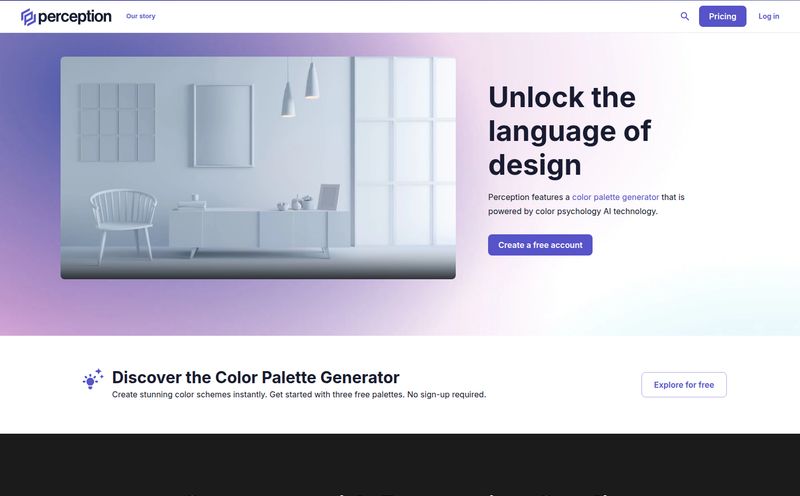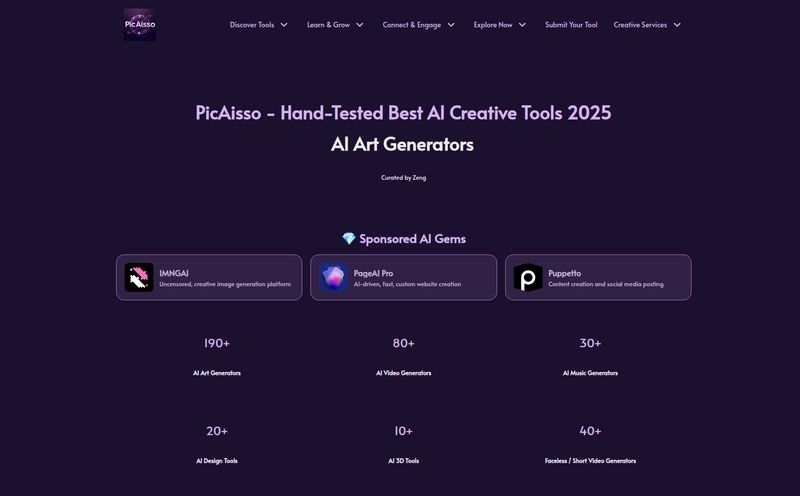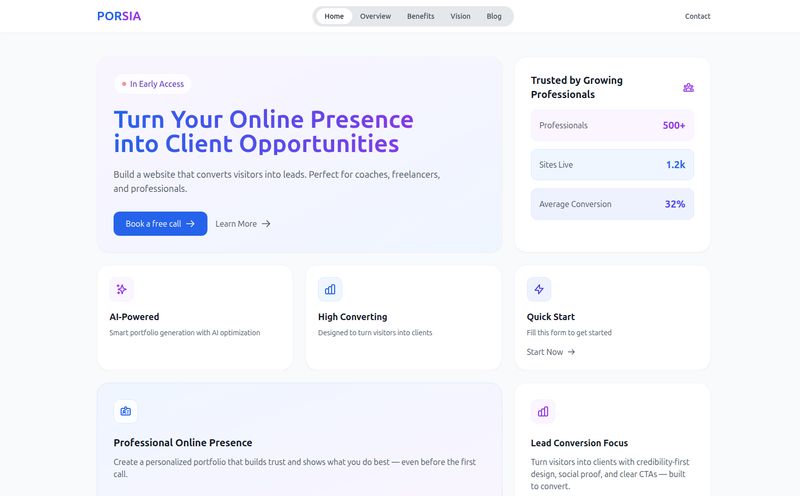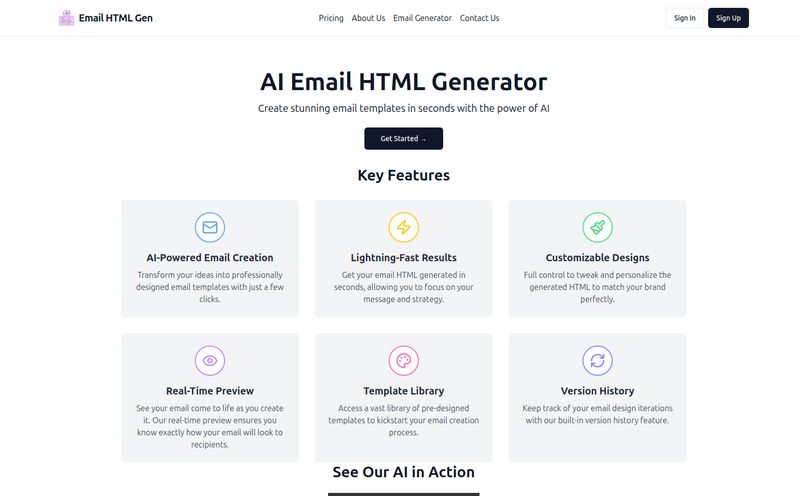If you've ever tried to launch a new idea—a SaaS product, a course, a simple newsletter—you know the first, most annoying roadblock. The landing page. It's the digital storefront, the first handshake, and it's a massive pain to get right.
You either spend a week wrestling with a clunky WordPress theme, drop a few hundred (or thousand) on a designer, or just give up and post a sad little Tweet instead. I've been there. I've spent more time fiddling with padding and margins than I have actually building the product. It’s the worst kind of creative quicksand.
So when I see a tool like MakeLanding pop up, flashing the promise of a "beautiful landing page in seconds," the seasoned, cynical SEO blogger in me raises an eyebrow. The excited, overworked entrepreneur in me leans in. An AI that does the whole song and dance—copy, design, even a logo? Okay, you have my attention. I had to see if this was just another shiny object or a genuine game-changer for people who just want to get their ideas out there.
So, What Exactly is MakeLanding?
In a nutshell, MakeLanding isn't your typical drag-and-drop builder. It’s not a template marketplace. It's a generative tool. You don't pick a layout and fill in the blanks. You give it a sentence—a single, simple description of your project—and it spits out a complete, one-page website.
The whole pitch is built on speed and simplicity. It uses AI to write the headlines, the feature descriptions, the call-to-actions... and get this, it even generates a unique logo and some custom illustrations to match. It's like having a hyper-caffeinated junior designer and copywriter on standby, ready to pull an all-nighter for you at the click of a button. The idea is to remove the friction, all of it, from idea to live page. A bold claim, for sure.
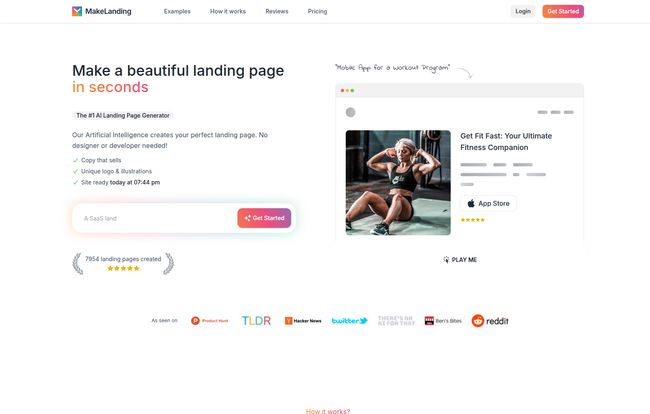
Visit MakeLanding
Putting It to the Test: My MakeLanding Experience
Talk is cheap, right? So I took it for a spin. The process is advertised as a simple three-step waltz: Describe, Generate, Customize.
For my test, I decided to create a landing page for a fictional service:
A subscription box for rare, ethically sourced coffee beans from around the world.
Pretty straightforward.
- The Prompt: I typed that exact sentence into the little box on their homepage and hit "Get Started." No complex forms, no 20-question survey. Just a single sentence. I have to admit, the minimalism was refreshing.
- The Big Reveal: It took... maybe 45 seconds? It wasn't instantaneous, but it was fast enough that I didn't have time to get distracted by Twitter. The screen refreshed, and there it was. A fully formed landing page. It had a headline, a hero image (AI-generated, of course), feature sections, a testimonial block, and a final call-to-action. The logo it made was a stylized coffee bean. It wasn't a masterpiece, but it was surprisingly decent. Way better than anything I could whip up in Canva in ten minutes.
- The Customization: This is where I expected it to fall apart, but the editor was surprisingly intuitive. You can click on any text to rewrite it, change the color palettes, upload your own images, and tweak the layout of the pre-made components. It's not Webflow-level granular control, but it's not supposed to be. It’s for quick, effective changes.
Honestly, the whole experience was smooth. Frighteningly smooth. I went from a one-sentence idea to a pretty-darn-good-looking, live landing page in under 15 minutes.
The Features That Actually Matter
Okay, it's fast. But is it any good? Let's break down the core components from an SEO and marketing guy's perspective.
The AI Copywriter: Friend or Foe?
The copy was the part I was most skeptical about. AI writing can often feel... hollow. Soulless. But the copy MakeLanding generated was a solid B+. It understood the concept of "ethically sourced" and "rare beans" and produced headlines like "Discover the World's Best Coffee, Delivered to Your Door." The feature descriptions were a bit generic but provided a fantastic starting point. It's not going to win a Clio award, but it's 90% of the way there, saving you from the terror of the blank page. It just needed a little polish to add some personal brand voice.
Instant Branding with AI Logos and Illustrations
This is a genuinely cool feature. Getting a logo, even a simple one, is usually a separate task and cost. The fact that it's bundled in is a huge win for validating an idea. The AI illustrations are a nice touch too, giving the page a more custom feel than just using sterile stock photos from Unsplash. It helps your quick-and-dirty landing page not look like a quick-and-dirty landing page.
Under the Hood: SEO, Speed, and Analytics
MakeLanding claims its pages are "Responsive, fast & SEO friendly." From what I saw, this holds up. The design was fully responsive out of the box, looking good on a mobile view. The code seemed clean and lightweight, which is a big thumbs up for page speed—a critical ranking factor. For SEO, it generates the basic meta titles and descriptions, but you'll definitely want to go in and optimize them yourself. The built-in analytics are very simple, basically just tracking page views. It's not Google Analytics, but for a simple launch, it tells you if people are showing up. For anything more serious, you'd want to add your own GA tracking code.
Let's Talk Money: The MakeLanding Pricing Model
Alright, here's the part that really caught my eye. In a world dominated by monthly subscriptions, MakeLanding is a breath of fresh air. They focus on a one-time payment model. You pay once, and the site is yours. This is huge.
Here’s a quick breakdown of their main offers (prices can change, so check their site for the latest):
| Plan Feature | Basic Plan | Pro Plan |
|---|---|---|
| Price | $29 (One-time) | $39 (One-time) |
| Websites | 1 | 1 |
| Revisions | Single Generation | Unlimited Revisions |
| Core Features | Logo, Illustrations, Copywriting | Logo, Illustrations, Copywriting |
| Advanced Features | Link to Share | Site Editor, Analytics, Download Code, Commercial Rights |
For just $10 more, the $39 plan is a no-brainer. Unlimited revisions mean you can keep re-rolling the AI dice until you get something you love. And the ability to download the code is massive—it means you're not locked into their platform. You can take the files and host them anywhere you want. That's true ownership.
The Good, The Bad, and The AI-Generated
No tool is perfect. Let's be honest about where MakeLanding shines and where it stumbles.
The stuff I loved: The speed is just undeniable. For anyone who values their time, this is killer. It’s an incredible tool for testing ideas. Got a new app concept? A niche newsletter? You can have a professional-looking front door for it in less time than it takes to watch an episode of The Office. And the one-time price point is just fantastic value. It lowers the barrier to entry for so many people.
Where it could be better: Let's be clear, this isn't going to replace a dedicated team of developers and designers for a major corporation. The customization is limited. You work within the components the AI gives you. If you have very specific, complex branding requirements, this might feel restrictive. Also, the AI content, while a great start, always needs a human touch. You can't just blindly trust it to perfectly capture your brand's voice and nuance. Lastly, the lack of a free trial or refund means you are taking a small leap of faith, but for $29, it's a pretty small leap.
Who is MakeLanding Actually For?
After playing around with it, I have a very clear picture of the ideal user.
This is a godsend for solo founders, indie hackers, and marketers. It’s for anyone who needs to validate an idea quickly and affordably. If you're launching a course, a simple digital product, or building a waitlist for a future launch, this tool is your new best friend. It gets you from zero to one faster than anything else I've seen.
However, if you're a large business with an established brand, or if you need a complex site with deep e-commerce functionality or third-party integrations, you'll probably outgrow it quickly. It's not a Swiss Army knife for every web project; it's a finely-honed scalpel for launching and testing.
My Final Verdict: A No-Brainer for Idea People
So, is MakeLanding worth it? For the right person, absolutely. It’s not just a tool; it’s a friction-remover. It eliminates the excuses that keep good ideas stuck in notebooks. The fear of design, the cost of development, the time-suck of building—it tackles all of it.
For less than the price of a nice dinner, you can have a live, professional-looking landing page for your next big thing. It won't build you an empire, but it will pour a damn fine foundation for one. And in the fast-moving world of online business, getting that foundation laid in minutes instead of weeks is an advantage that's hard to put a price on.
Frequently Asked Questions (FAQ)
Can I try MakeLanding before I buy it?
Currently, MakeLanding doesn't offer a free trial or a free plan. This is mainly because running the generative AI models costs them money for every page created. However, their one-time payment model makes it a low-risk investment to test it out.
Is the generated content and design truly unique?
The content is generated by an AI model based on your prompt, so it should be unique. The illustrations and logos are also generated on the fly. While the underlying structure might be similar across sites, the combination of AI copy, unique imagery, and your own customizations should result in a page that looks and feels distinct.
How good is the SEO out of the box?
The basics are there. The pages are responsive and built with clean code for good page speed. The AI will generate initial meta titles and descriptions. However, for serious traffic generation, you should treat this as a starting point. You'll want to manually refine the on-page SEO elements like titles, headers, and image alt text to align with your keyword strategy.
Can I download the code and host the site myself?
Yes! This is one of its best features. The higher-tier plan (typically the $39 one) allows you to download the complete HTML, CSS, and image files. This means you are not locked into their platform and can host your site anywhere you like.
What if I don't like the first design the AI creates?
This is the key difference between their pricing tiers. The basic plan gives you one generation. The premium plan, however, offers unlimited revisions. This means you can keep clicking the generate button, tweaking your prompt, and re-rolling until the AI produces a design and copy combination that you love.
